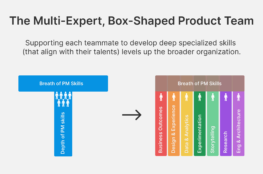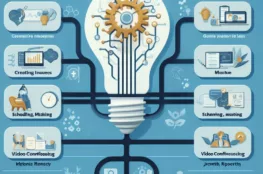When building consumer and data products, product decisions are most often incorrect (up to 80-90% of the time!) As such, the key to successful product development lies in the ability to quickly gain insights and iterate.
Success isn’t found in initial perfection but in the adeptness to rapidly glean insights and iterate. Being wrong is not a setback but a stepping stone that propels the innovation engine.
It’s crucial to understand how wrong you are, why you’re wrong, and what the next iteration should entail. High-performing technical teams embrace failure, creating systems and processes to learn from mistakes, and shorten iteration cycles for faster progress. They are adept at engineering systems and processes that not only absorb mistakes but transform them into learning opportunities, accelerating progress.
In this blog post, I will share tips and strategies to enhance your iteration speed, foster a learning culture, and bolster technical efficacy
Cultivate a Learning Culture
Celebrate being wrong, but with the condition that the company learns from its mistakes. Encourage an environment where failure is seen as an opportunity for growth and improvement.
Maintain a Hypothesis Backlog
Create a backlog prioritizing and estimating hypotheses, treating them like a regular product backlog. Include detailed descriptions of each bet, strategies for validation, and the outcomes and learnings associated with each experiment.
Optimize Technical Architectures for Speed
During the early stages, prioritize speed over product fidelity, automation, and resilience. Choose technical architectures that support rapid iteration.
Avoid overbuilding backends for initial product iterations, as they are likely to change significantly.
Prioritize Analytics Instrumentation
Each product venture should include a ‘success metrics’ component, including an analytics tracking plan. This ensures the entire team understands what they need to measure and validates that the necessary data hooks are in place before launch.
Don’t Wait for Statistical Significance
It’s rare for an early product to accumulate enough usage for statistically significant insights. Therefore, don’t wait for it. Balance early data with heuristic instincts while keeping a close eye on biases. Don’t hesitate to make informed decisions based on the available information.
Document and Centralize Insights
Build a knowledge base to store outcomes from experiments. Treat these insights as invaluable resources for your organization. Encourage external teams, such as marketing, to contribute their experiment outcomes to this knowledge base. Invest time in structuring this repository effectively.
Share and Celebrate Outcomes
Embrace failures that lead to valuable insights. Share these learnings widely within the organization to foster a culture of continuous improvement.
Plan Next Iterations
Design subsequent sprints quickly based on the new insights gained. Roadmaps often require significant pivots as you accumulate more knowledge, so be open to adapting your plans accordingly.
Revisit Experiments Over Time
Consider repeating experiments when appropriate, as the outcomes can be influenced by factors such as user preparedness, technical feasibility, and changing foundational elements. What didn’t work previously may succeed now due to altered circumstances.
Monitor and Improve Iteration Cycle Time
Regard product iteration cycle time as a core company Key Performance Indicator (KPI) and actively work to enhance it over time.
By embracing failure, fostering a learning culture, and implementing efficient processes, your technical team can significantly improve product iteration speed. Remember that the path to success involves acknowledging mistakes, gaining insights, and continuously adapting based on newfound knowledge. With these strategies in place, your organization can thrive in the ever-evolving landscape of product development.



